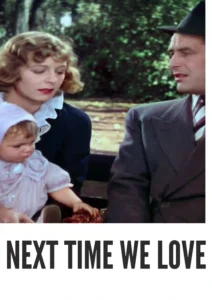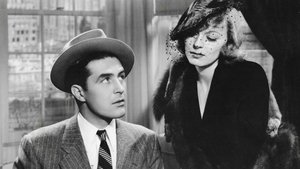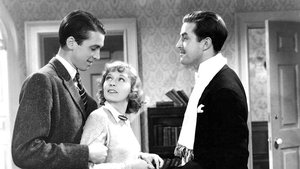Video Sources 0 Views

Synopsis
When Love and Ambition Collide: Next Time We Love (1936) in Vivid Color

Step back in time with Next Time We Love, a poignant romantic drama from 1936, now beautifully colorized for a viewing experience that captures the era’s charm. Also known as Next Time We Live, this film explores the challenges of balancing love and career aspirations. Perfect for fans of classic romance and those who appreciate stellar performances from Hollywood legends, this HD download offers a glimpse into the complexities of relationships during a transformative time.
Next Time We Love Storyline: A Tale of Love and Sacrifice
Next Time We Love tells the story of Cicely Tyler (Margaret Sullavan), a young aspiring actress, and Tommy Abbott (James Stewart), a driven journalist. Their whirlwind romance leads to marriage, but their individual ambitions soon create conflict.As Tommy’s career takes off, he travels the world, leaving Cicely to pursue her dreams on the stage. The distance and demanding schedules strain their relationship, forcing them to confront difficult choices about their priorities. Despite their love for each other, they struggle to find a way to balance their personal and professional lives. The film explores themes of sacrifice, ambition, and the enduring power of love, making it a timeless classic. Ultimately, Next Time We Love is a moving portrayal of the challenges faced by couples navigating the complexities of modern life.
Movie Cast
The film features a talented cast of actors who bring this emotional story to life:
- Margaret Sullavan as Cicely Tyler
- James Stewart as Tommy Abbott
- Herbert Marshall as Christopher Tyler
- Ray Collins as M. Grahame
Movie Genre
Next Time We Love falls into the genre of romantic drama, with elements of social commentary and emotional depth that are characteristic of 1930s cinema. Its exploration of love, ambition, and personal sacrifice makes it a compelling and engaging film.
Historical Context: Hollywood’s Golden Age
Released in 1936, Next Time We Love represents a significant period in Hollywood’s Golden Age, showcasing the era’s sophisticated storytelling, stellar performances, and glamorous production values. The film reflects the changing roles of women in society and the challenges faced by couples balancing personal and professional aspirations. While Next Time We Love may not be as widely known as some of the era’s blockbusters, it offers valuable insights into the social and cultural landscape of the time and the evolution of cinematic romance.
Colorization Details
This colorized version of Next Time We Love has been meticulously restored using modern digital techniques, enhancing the visual appeal while preserving the film’s original emotional depth and atmospheric charm. The colorization process involved carefully analyzing the grayscale tones of the original black and white footage and assigning appropriate colors to each scene. While the specific software used remains proprietary, the techniques employed included advanced algorithms for color palette selection and image enhancement. This painstaking process brings new life to the characters and settings, making the story even more engaging for modern audiences. While some may debate the merits of colorizing classic films, it introduces these films to a broader audience, ensuring their legacy for future generations.
Technical Details
- Director: Edward H. Griffith
- Screenplay: Melville Baker, Ursula Parrott
- Novel: “Next Time We Live” by Ursula Parrott
- Cinematography: Joseph A. Valentine
- Edited by: Bernard Burton
- Production Company: Universal Pictures
- Distributed by: Universal Pictures
- Runtime: 87 minutes
Technical Specifications
- Download Format: MP4
- Resolution: HD (1080p)
- Compatibility: Compatible with most devices, including smartphones, tablets, computers, and smart TVs.
Reviews and Critical Reception
Next Time We Love (1936) is celebrated for its poignant storyline, stellar performances, and insightful exploration of love and ambition. While it may not be considered one of the most iconic films of the era, it remains a captivating and emotionally resonant example of classic Hollywood cinema and a valuable piece for film enthusiasts. As a relatively lesser-known but intriguing film, Next Time We Love provides a unique perspective on the complexities of relationships during a transformative time.
FAQs
- Q: What is Next Time We Love about?
- A: Next Time We Love is a romantic drama about a couple who struggle to balance their love with their individual ambitions.
- Q: Is Next Time We Love (1936) a well-known classic Hollywood film?
- A: Next Time We Love is one of classic Hollywood’s earlier and lesser-known works, offering a glimpse into the social dynamics of the time.
- Q: Is this version of Next Time We Love colorized?
- A: Yes, this version has been professionally colorized to enhance the viewing experience.
- Q: What makes Next Time We Love interesting for classic film fans?
- A: Next Time We Love offers valuable insights into Hollywood’s Golden Age, showcasing the era’s sophisticated storytelling and stellar performances.
- Q: What is the download format?
- A: The download format is MP4, which is compatible with most devices.
- Q: What resolution is the download?
- A: The resolution is HD (1080p), providing a high-quality viewing experience.
Download Now in HD!
Watch Next Time We Love Today!











